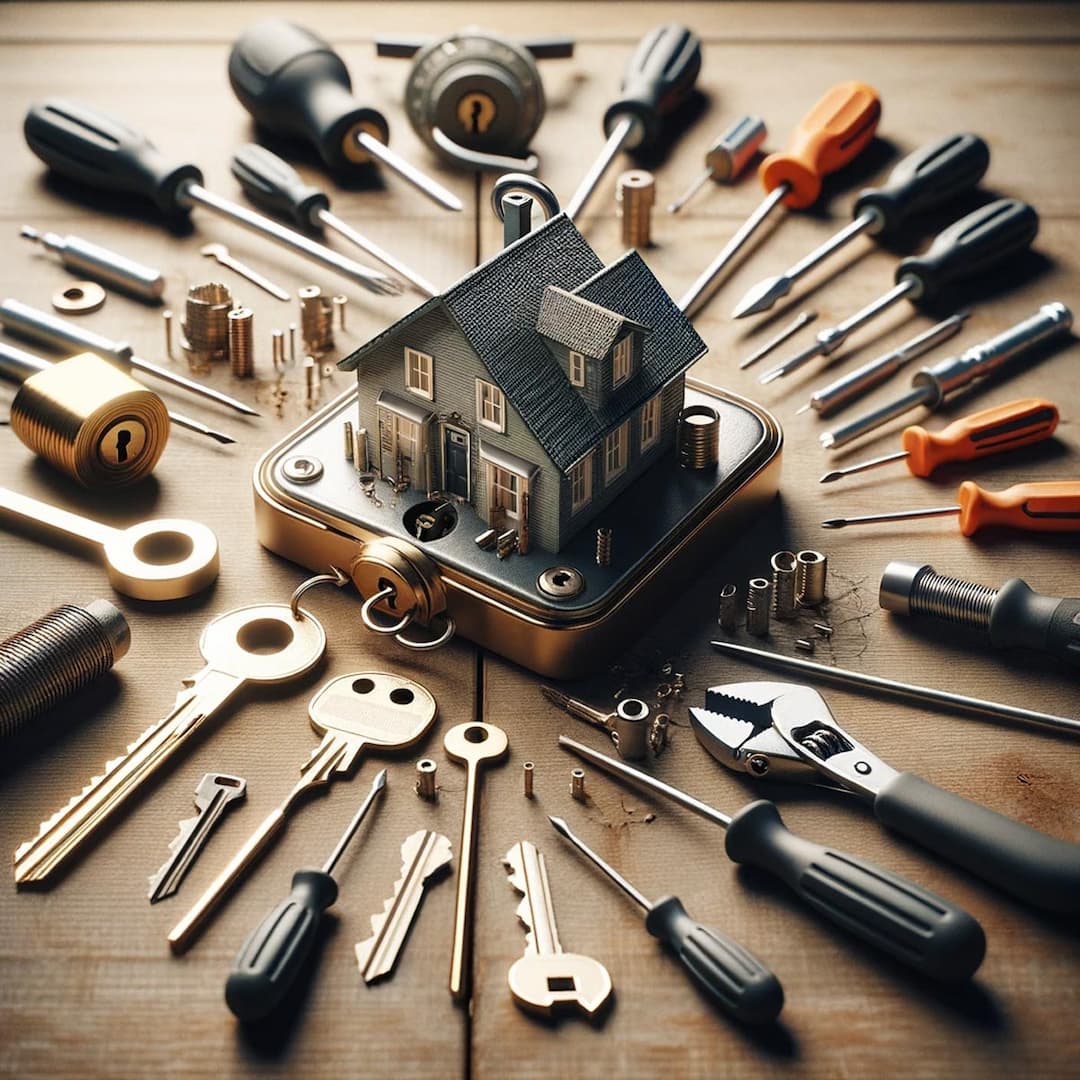
Expert Solutions for Top 5 Frequent Lock Problems: Practical DIY Fixes and Tips
Locks are an essential component of our daily lives, providing security and peace of mind. However, they can also be a source of frustration when they malfunction. From jammed locks to broken keys, issues with locks are not only inconvenient but can also compromise your safety. This article provides practical advice on addressing the top five common lock problems, offering both expert tips and do-it-yourself solutions.
Jammed Locks - Causes and Fixes
Understanding the Issue:
A jammed lock is a common problem that can be caused by various factors, such as dirt accumulation, misalignment, or internal damage.
DIY Solutions:
- Lubrication: Often, a simple lubrication using graphite or a silicone-based lubricant can resolve the issue.
- Alignment Check: Ensure the door and lock mechanism are properly aligned.
- Cleaning: Regular cleaning of the lock can prevent jamming.
Professional Advice:
If the lock remains unresponsive after these steps, it might indicate a more severe internal issue, warranting a professional locksmith's intervention.
Broken Keys - Prevention and Retrieval Techniques
Understanding the Problem:
Keys can break due to wear and tear, excessive force, or using the wrong key.
Preventive Measures:
- Regular Inspection: Check your keys for signs of wear.
- Proper Usage: Avoid using excessive force when unlocking.
DIY Retrieval:
- Tools: Use needle-nose pliers or a key extraction kit to carefully remove the broken piece.
- Lubrication: Applying a lubricant can ease the extraction process.
Expert Insight:
A professional locksmith can efficiently extract the key and provide a replacement if necessary.
Unresponsive Smart Locks - Troubleshooting and Solutions
Identifying the Issue:
Smart locks, an advanced security solution, can sometimes become unresponsive due to power issues, connectivity problems, or software glitches.
Troubleshooting Steps:
- Power Check: Ensure the lock is adequately powered, whether by battery or mains.
- Connectivity Check: Verify Wi-Fi or Bluetooth connectivity, depending on the lock type.
- Reset: A factory reset can sometimes resolve software-related issues.
Expert Tips:
Regular firmware updates and maintaining a stable internet connection are crucial for smart lock functionality. If problems persist, contacting the manufacturer or a tech-savvy locksmith is advisable.
Key Spinning in the Lock - Understanding and Fixing
The Problem Explained:
When a key spins without engaging the lock mechanism, it often indicates a disconnection between the key cylinder and the lock mechanism.
DIY Fixes:
- Tightening Screws: Sometimes, simply tightening the screws on the cylinder can fix the issue.
- Cylinder Adjustment: Adjust the position of the cylinder for proper engagement.
Professional Solution:
A locksmith can repair or replace the cylinder if DIY fixes don't work, ensuring the lock functions correctly with the key.
Door Lock Misalignment - Causes and Rectification
Recognizing the Problem:
Misalignment in door locks can occur due to changes in door structure, temperature fluctuations, or wear and tear, leading to difficulty in locking or unlocking.
Self-Help Solutions:
- Adjust the Strike Plate: Realignment of the strike plate can solve minor misalignment issues.
- Weather Stripping: Adding or adjusting weather stripping can account for temperature-related changes.
Seeking Professional Help:
Persistent misalignment issues might require a locksmith's expertise to realign or replace the lock mechanism for smooth operation.
Each of these common lock issues, while frustrating, can often be resolved with a mix of DIY methods and professional help. Regular maintenance and being aware of how your locks function can prevent many of these problems. However, when in doubt, seeking professional advice is always the safest option to ensure your security is not compromised.